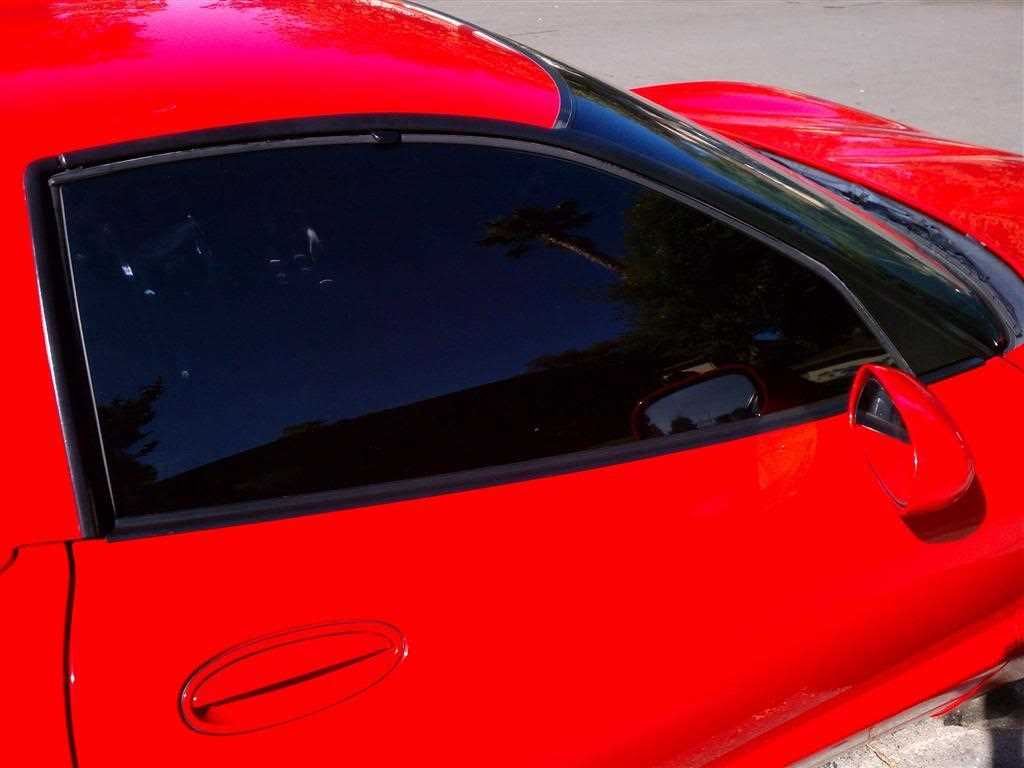Last Updated on February 10, 2024 by Vadym

If you have recently had your car windows tinted, it is important to know how long you should wait before rolling them down. Window tinting is a popular choice among car owners, as it not only enhances the appearance of the vehicle, but also offers several benefits such as UV protection and improved privacy.
After getting your car windows tinted, it is recommended to wait for at least 48 hours before rolling them down. This waiting period allows the tint to properly adhere to the glass and ensures that it does not peel or bubble. Rolling down the windows too soon can disrupt the tinting process and result in unsightly damage.
During the initial 48-hour period, it is important to keep the windows rolled up as much as possible. This helps to create a seal that allows the tint to set and bond effectively. Rolling down the windows prematurely can cause the tint to pull away from the glass, ruining the appearance and reducing the lifespan of the tint.
It is also worth noting that the amount of time required for the tint to fully cure may vary depending on various factors such as the type of tint, the climate conditions, and the quality of the installation. It is always best to consult with your tinting professional to get specific advice based on your unique situation.
In conclusion, it is best to wait for at least 48 hours before rolling down your car windows after tinting. This allows the tint to properly adhere to the glass and ensures a long-lasting and visually appealing result. Remember to follow any additional guidelines provided by your tinting professional to maximize the effectiveness and lifespan of your window tint.
The Importance of Waiting
After having your windows tinted, it’s important to exercise patience and wait before rolling them down. This waiting period is crucial to ensure that the tint film adheres properly and does not get damaged.
The amount of time you should wait before rolling down your windows will depend on various factors, including the type of tint film used and the weather conditions. It is generally recommended to wait at least 24 to 48 hours before rolling down your windows.
During this waiting period, the tint film needs time to cure and bond with the glass surface. Rolling down the windows too soon can disrupt this process and result in an uneven application or even damage to the film.
In some cases, the tinting professional may advise you to wait even longer, especially if the weather is hot and humid. High temperatures and excessive moisture can prolong the curing process, so it’s important to follow their instructions to ensure the best results.
Additionally, waiting before rolling down your windows also helps to prevent any debris or dirt from getting trapped between the tint film and the glass. If you roll down the windows too soon, you risk introducing particles that can mar the appearance of the tint or cause scratches.
| Why waiting is important: |
|---|
| Proper adhesion: Allowing the tint film to cure ensures that it adheres properly to the glass surface and prevents any peeling or bubbling. |
| Avoiding damage: Rolling down the windows too soon can damage the tint film and ruin the overall look of your windows. |
| Preventing debris: Waiting before rolling down the windows helps to keep your tint film free from debris, ensuring a clean and polished look. |
| Optimal results: Patience is key when it comes to window tinting. By waiting for the recommended period, you can ensure that you achieve the best possible results. |
Ultimately, waiting before rolling down your newly tinted windows is essential for the longevity and appearance of your tint film. It may require some patience, but the wait is well worth it in the end.
Understanding When to Roll Down Windows After Tint

Applying window tint to your car can enhance its appearance and provide several benefits, including heat reduction and UV protection. However, after tinting your windows, it is important to follow the recommended guidelines to ensure that the tint sets properly and lasts for a long time. One of the key recommendations is to avoid rolling down your windows for a specific period of time after the tint installation.
The exact time that you should wait before rolling down your windows after tinting will depend on several factors, including the type of tint film used and the weather conditions. In general, it is advisable to wait for at least 2 to 4 days before rolling down your windows. During this time, the tint film needs to fully adhere to the window surface, which can be affected by moisture and pressure changes.
Moisture is a common concern when it comes to window tinting. Rolling down your windows too soon can expose the tint film to moisture, which can lead to bubbling or water spots. It is important to allow the tint to dry and cure properly before the windows are opened. This is especially important if the tint was applied during a rainy or humid period, as the additional moisture can interfere with the bonding process.
Another factor to consider is the pressure changes that can occur when rolling down the windows. When the windows are rolled down, it creates a pressure difference between the inside and outside of the car. This pressure change can affect the tint film, especially if it hasn’t fully adhered to the window surface. Waiting a few days allows the tint film to properly set and minimizes the risk of peeling or bubbling when the windows are opened.
It is also worth noting that the waiting period may vary depending on the type of tint film used. Some tint films may have specific curing times or manufacturer recommendations, so it is important to consult with the professional installer to get accurate information for your specific tint job.
In summary, it is crucial to understand when to roll down your windows after tinting to ensure that the tint sets properly and lasts for a long time. Waiting for at least 2 to 4 days, depending on the type of tint film and weather conditions, allows the tint to fully adhere to the window surface and minimizes the risk of issues such as bubbling or peeling. Consulting with a professional installer is always recommended for specific advice and guidelines.
The Risk of Premature Window Opening
After getting your windows tinted, it is important to understand the risk of premature window opening. Opening your windows too soon after the tint installation can cause a variety of problems and may even damage the tint film.
One of the main reasons to avoid rolling down your windows immediately after tinting is to allow the tint film to properly adhere to the glass. Tint adhesives take time to cure and bond with the window surface. If you open your windows too soon, the adhesive may not have fully dried and could be disturbed, causing the tint to peel or bubble.
Another risk of premature window opening is potential damage to the tint film itself. Rolling down the windows can create friction between the tint and the window seal, leading to scratches or marks on the tint film. Additionally, if there is any excess moisture trapped between the window and the tint, opening the windows can cause the moisture to streak or create water spots on the tint.
It is generally recommended to wait at least 24 to 48 hours before rolling down your windows after tint installation. This timeframe allows the tint film to fully cure and the adhesive to bond securely with the glass. However, it is always best to follow the specific instructions and recommendations provided by your tint installer, as the curing time may vary depending on the type of tint film used.
In conclusion, the risk of premature window opening after tint installation is that it can prevent the tint film from properly adhering to the glass, potentially causing peeling, bubbling, or damage to the tint itself. It is important to wait the recommended amount of time before rolling down your windows to ensure the longevity and appearance of your tinted windows.
Factors That Determine the Waiting Time
The waiting time before rolling down your windows after getting them tinted can vary depending on several factors. These factors include:
1. Type of Window Tint: Different types of window tint have different curing times. Some window films may require longer waiting times before you can roll down your windows, while others may have shorter waiting periods.
2. Type of Vehicle: The type of vehicle you have can also impact the waiting time. Larger vehicles, such as SUVs and vans, may require more time for the window tint to fully cure compared to smaller cars.
3. Weather Conditions: The weather conditions can affect the curing time of the window tint. In hot and humid weather, the tint may cure faster, while in cooler weather or rainy conditions, it may take longer.
4. Quality of Window Tint Installation: The quality of the window tint installation can also determine the waiting time. If the tint is not properly applied or if there are any air bubbles present, it may take longer for the tint to fully cure.
5. Type of Window Glass: The type of window glass in your vehicle can also influence the waiting time. Some types of glass may require more time for the tint to adhere properly.
It is important to follow the instructions provided by your window tint installer to ensure that you wait the appropriate amount of time before rolling down your windows. This will help to ensure the tint adheres properly and avoids any damage or bubbling.
Preserving the Quality of Tinted Windows
Applying window tint to your vehicle can provide numerous benefits, including enhanced privacy, reduced glare, and protection against harmful UV rays. However, it’s essential to take proper care of your newly tinted windows to ensure their longevity and quality. Here are some tips to help preserve the quality of your tinted windows:
| Avoid rolling down the windows immediately after tinting: | After tinting your vehicle’s windows, it’s important to avoid rolling them down for a certain period. This allows the tint to fully dry and adhere to the glass properly. The recommended waiting time may vary depending on the type of tint and weather conditions, so it’s best to consult with your tinting professional for specific guidelines. |
| Handle the windows with care: | When interacting with your tinted windows, it’s crucial to be gentle and avoid using excessive force. Rough handling can potentially damage the tint or cause it to peel off. Be mindful of sharp objects, such as keys, that can scratch the tinted surface. Regularly clean the windows using a soft cloth or non-abrasive cleaning solution to maintain their appearance. |
| Avoid using abrasive cleaners or materials: | When cleaning the tinted windows, it’s important to steer clear of abrasive cleaners or materials that can scratch or damage the tint. Instead, use a mild, non-ammonia-based cleaner and a soft cloth or sponge. Be careful not to apply too much pressure during cleaning, as excessive friction can affect the tint’s quality. |
| Protect the tint from excessive heat: | Direct exposure to extreme heat can potentially cause the tint to fade or bubble. To protect the tinted windows from excessive heat, consider parking your vehicle in shaded areas or using a windshield sunshade. Additionally, avoid using high-powered car washers or spraying hot water directly on the windows, as it can damage the tint. |
| Maintain proper ventilation: | Allowing proper ventilation inside your vehicle can help control the temperature and prevent excessive heat buildup, which can be harmful to the tinted windows. When parked under the sun, crack open the windows slightly to allow some airflow. This can reduce the strain on the tint and help preserve its quality. |
By following these guidelines, you can ensure the longevity and quality of your tinted windows. Remember to consult with a professional tinting service for specific care instructions tailored to your tint and vehicle.
Proper Window Care After Tinting
After getting your windows tinted, it is important to take proper care of them to ensure the tint lasts as long as possible. Here are some essential tips to follow:
- Wait for the curing time: It is crucial to wait for the recommended curing time before rolling down your windows. This ensures that the tint fully adheres to the glass and is not damaged.
- Avoid touching the film: Refrain from touching the window tint with bare hands or any sharp objects. This can cause scratches and damage to the tinted surface.
- Clean properly: When cleaning the tinted windows, use a mild detergent or a specialized tint-safe cleaner. Avoid products that contain ammonia or any abrasive materials, as they can damage the tinted film.
- Gentle wiping: When wiping the tinted windows, use a soft microfiber cloth or a non-abrasive sponge. Avoid using abrasive materials like paper towels, which can scratch the film.
- Avoid harsh chemicals: Do not use harsh chemicals, solvents, or ammonia-based cleaning agents on the tinted windows, as they can cause discoloration and damage the film.
- Avoid excessive water: While it is fine to clean the tinted windows with water, avoid excessive water exposure, such as high-pressure car washes or heavy rain. Excessive water can seep under the edges of the tint and cause it to peel or bubble.
- Protect the edges: Take care to protect the edges of the tinted window film from any peeling or lifting. If you notice any signs of damage or peeling, have it repaired professionally.
- Maintain regular cleaning: Regularly clean the tinted windows to remove dirt, dust, and debris. This not only keeps them looking good but also prevents any build-up that could cause damage to the tint over time.
By following these proper window care practices after tinting, you can ensure that your tinted windows stay in excellent condition for years to come.
